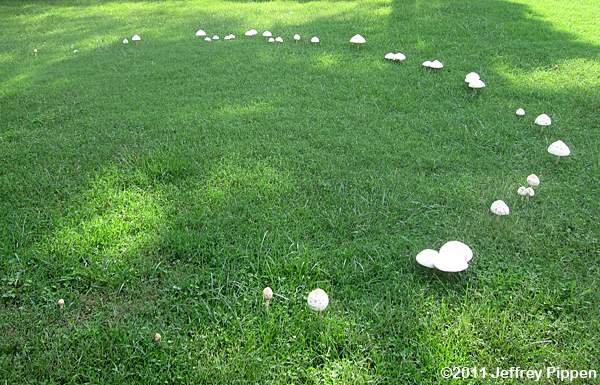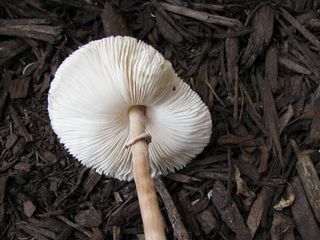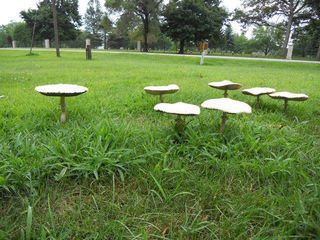Humble Habitat
Where on Earth can you find this mushroom?

Chlorophyllum molybdites have been called the “backyard mushroom”
because it is often growing in open, grassy backyards or in forests.
It appears that this fungus thrives in warm, wet places and is
typically associated with the south and western parts of the United
States, often in Colorado and the southern side of California.
However, the Midwest is capable of having this climate during summer
time and this fungus has been known to make an appearance here in La
Crosse. They can also be found in the tropics all around the world
because of the warm and humid climate there.
Over 100 years ago this mushroom moved from the southern to middle
countries in the Americas. It has reached international borders and
become more abundant in Japan since the 1970s where there have been
continuous cases of poisoning from this mushroom. The increase in
climate temperature is a possible reason for the emergence of these
mushrooms in Japan, which is considered a temperate zone.
Often times this fungus can be
found growing in “fairy rings”. This is a description of the way
fungus colonizes the ground in a ring-shape formation. The name
fairy ring dates back to an old folk tale in England where it was
believed fairies would prance around in a circle and the mushrooms
would pop up in their trail. As much as this fairy tale paints an
endearing picture in your head, we now know more about why this
phenomenon happens.
This fungus contains hyphae, thread-like structures that make up
the body of the fungus called a mycelium. This mycelium is
underground and grows in an outward circle. The mycelium gather
nutrients for the plant and ends up using all the resources from the
grass and moves outward to gain new nutrients, keeping the circle
formation. It will keep growing until it reaches a barrier or runs
out of nutrients. When this happens, the central mycelium dies and
gives back nutrients to the grass that it has been killing, allowing
for the formation of new grass. The most commonly known fairy ring
mushroom is the Marasmius oreades. This mushroom is not only the
queen of growing in fairy rings, but also has the capability to
revive itself after drying out. You can read more about this
mushroom
here.
Well now you know all about fairy rings, which are not produced
by fairies. Sorry to take the magic away from you. To make up for it
here are some other folklore about fairy rings form all over the
world:
-In Germany it was believed fairy rings were where witches gathered
to dance. They call it Hexenringe in German which means "witches'
rings".
-The Old Dutch, on the other hand, thought rings were caused by where the devil churns his milk.
-Austria claimed it was the dragons.
Overall, the tales all typically deal with the belief it was
caused by elves or fairies dancing. These legends all have the
commonality that they warn us humans from disrupting the dance or
they will be punished. This probably came about because some of the
mushrooms that occur in rings are poisonous. This is a good tale
to warn children and to remind future generations against consuming
these mushrooms.

